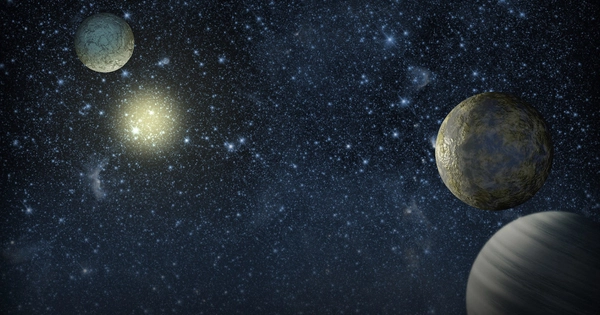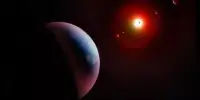A large number of exoplanets have been discovered in recent years orbiting single ‘normal’ stars. According to new research, there may be exceptions to this trend. Researchers from The Autonomous University of Nuevo León (UANL), The National Autonomous University of Mexico (UNAM), and New York University Abu Dhabi propose a new method for detecting faint bodies such as planets orbiting exotic binary stars known as Cataclysmic Variables (CVs).
The exoplanet is imaged directly using large telescopes fitted with adaptive optics and coronagraphs. The technique is most sensitive to the warmer, bright (young), and massive exoplanets on wide and/or eccentric orbits (large sky projected separations). The separation from the host star allows for spectra to be obtained directly and allows for the direct measurement of luminosity.
Our research has shown that a third body can perturb a cataclysmic variable in such a way that it causes changes in brightness in the system. These perturbations can explain both the very long periods observed – between 42 and 265 days – as well as the magnitude of the brightness changes.
Dr. Carlos Chavez
CVs are binary star systems in which two stars are so close to each other that the less massive object transfers mass to the more massive. CVs are typically composed of a small, cool star known as a red dwarf and a hot, dense star known as a white dwarf. Red dwarf stars have masses ranging from 0.07 to 0.30 solar masses and radii that are roughly 20% that of the Sun, whereas white dwarf stars have masses ranging from 0.75 to 0.75 solar masses and radii that are similar to that of the planet Earth.
The exoplanet is discovered by measuring the Doppler shift in the host star’s light, which is caused by gravitational interactions between the two bodies. The technique is most sensitive to exoplanets with a large mass that orbit perpendicular to the plane of the sky close to their host star. The radial velocity technique allows for the calculation of a minimum mass (dependent on orbital inclination).

The transfer of matter from the small star in the CV system forms an accretion disk around the compact, more massive star. The brightness of a CV system is primarily provided by this disk, which outweighs the light from the two stars. A third faint body orbiting a CV has the potential to influence the mass transfer rate between the two stars, and thus the overall brightness of the system. The new method is based on changes in brightness in the accretion disk caused by perturbations of the third body orbiting around the inner two stars.
Using changes in the brightness of each system, team leader Dr. Carlos Chavez and his collaborators calculated the mass and distance of a third body orbiting four different CVs. According to the team’s calculations, such brightness variations have very long periods in comparison to the orbital periods in the triple system. Two of the four CVs appear to have bodies resembling planets in orbit around them.
Dr. Chavez comments on the new findings, “Our research has shown that a third body can perturb a cataclysmic variable in such a way that it causes changes in brightness in the system. These perturbations can explain both the very long periods observed – between 42 and 265 days – as well as the magnitude of the brightness changes. Of the four systems we studied, our observations suggest that two of the four have objects of planetary mass in orbit around them,” he adds.
The scientists believe that this is a promising new technique for discovering planets in orbit around binary star systems, adding to the thousands discovered over the last three decades.
















